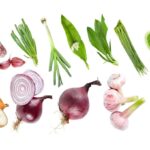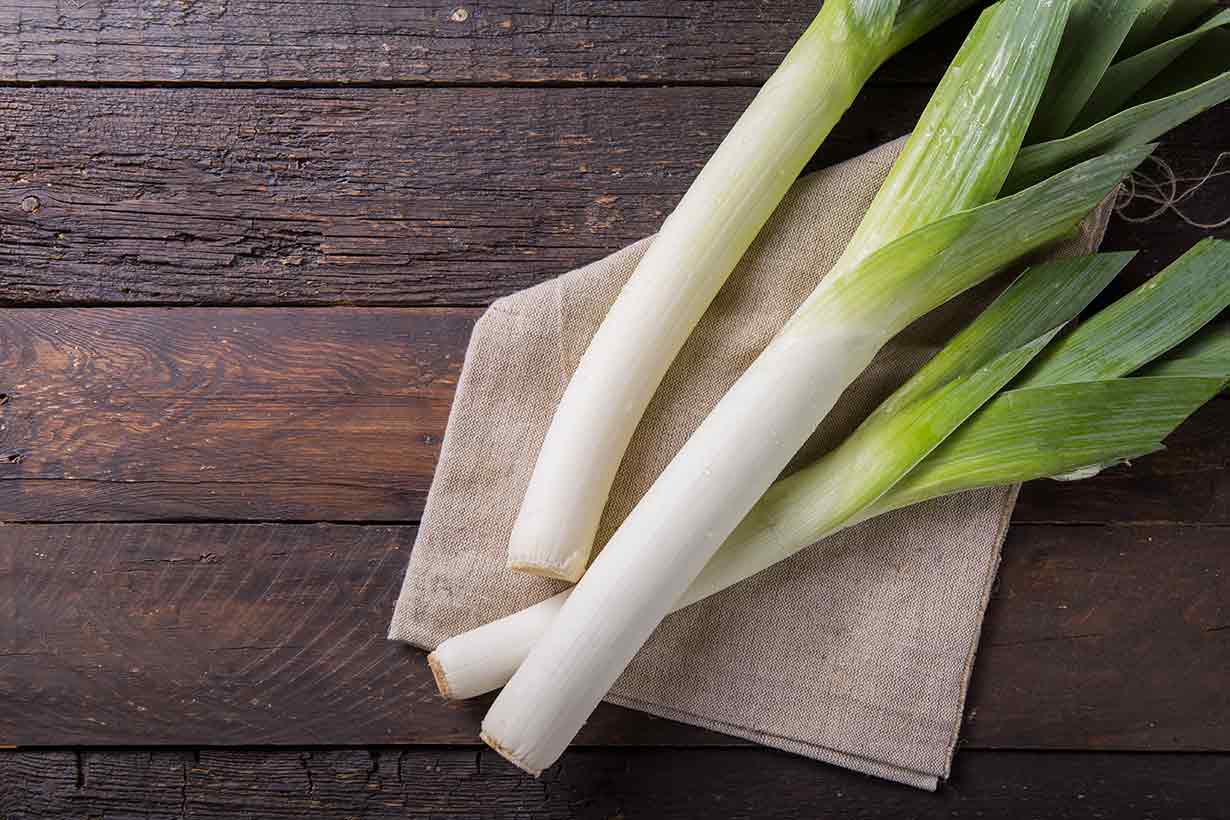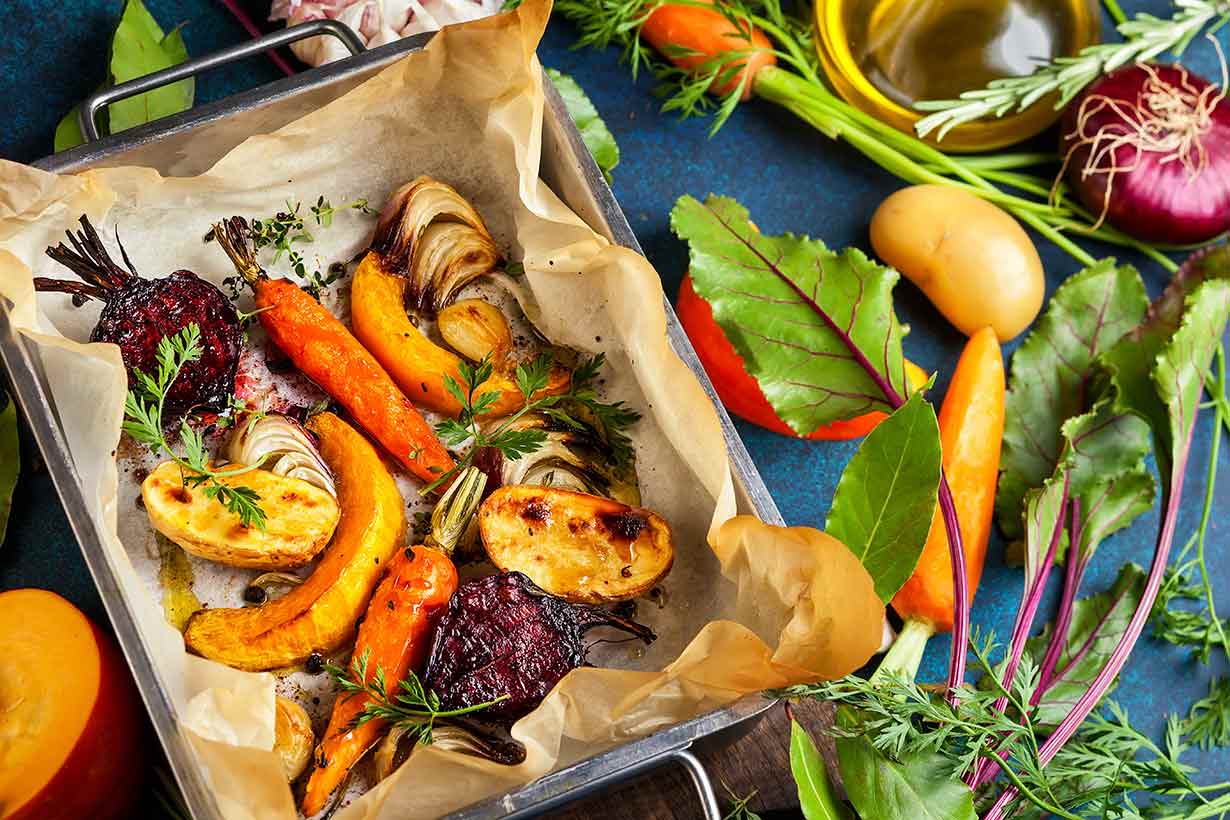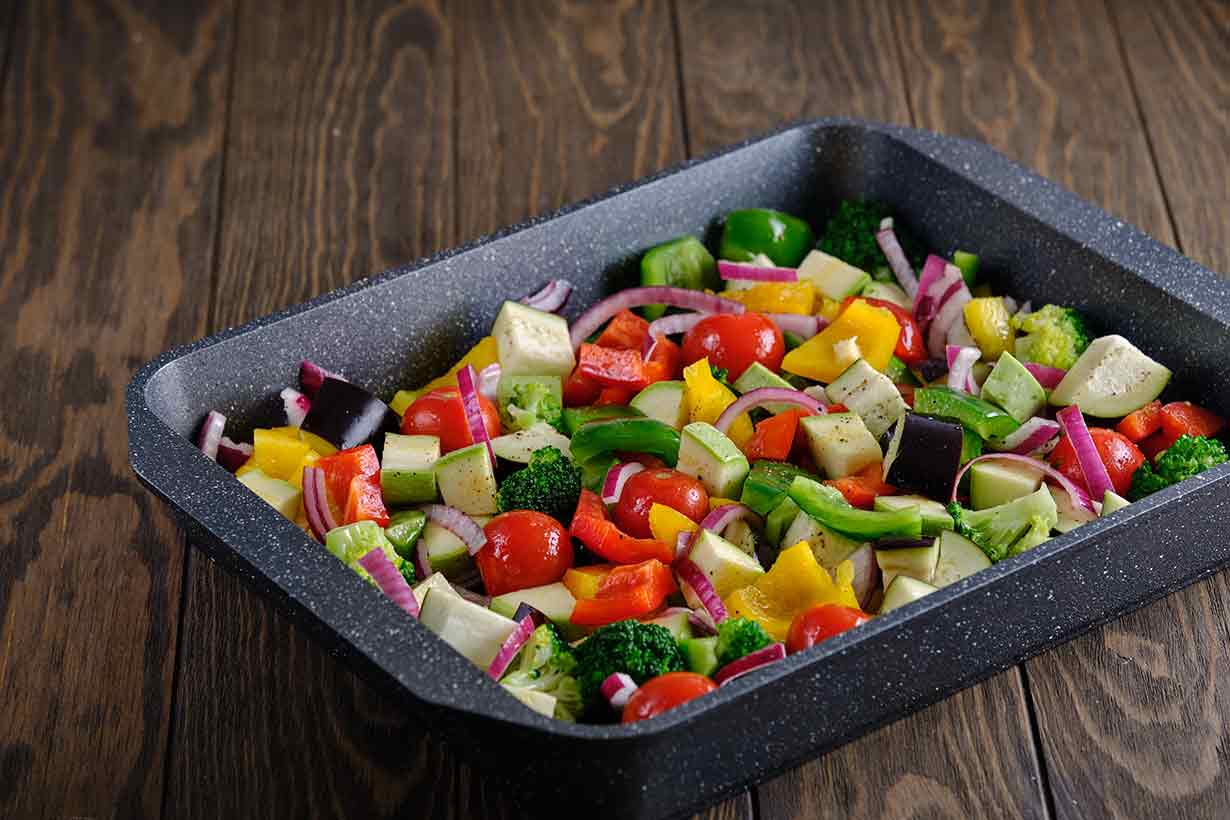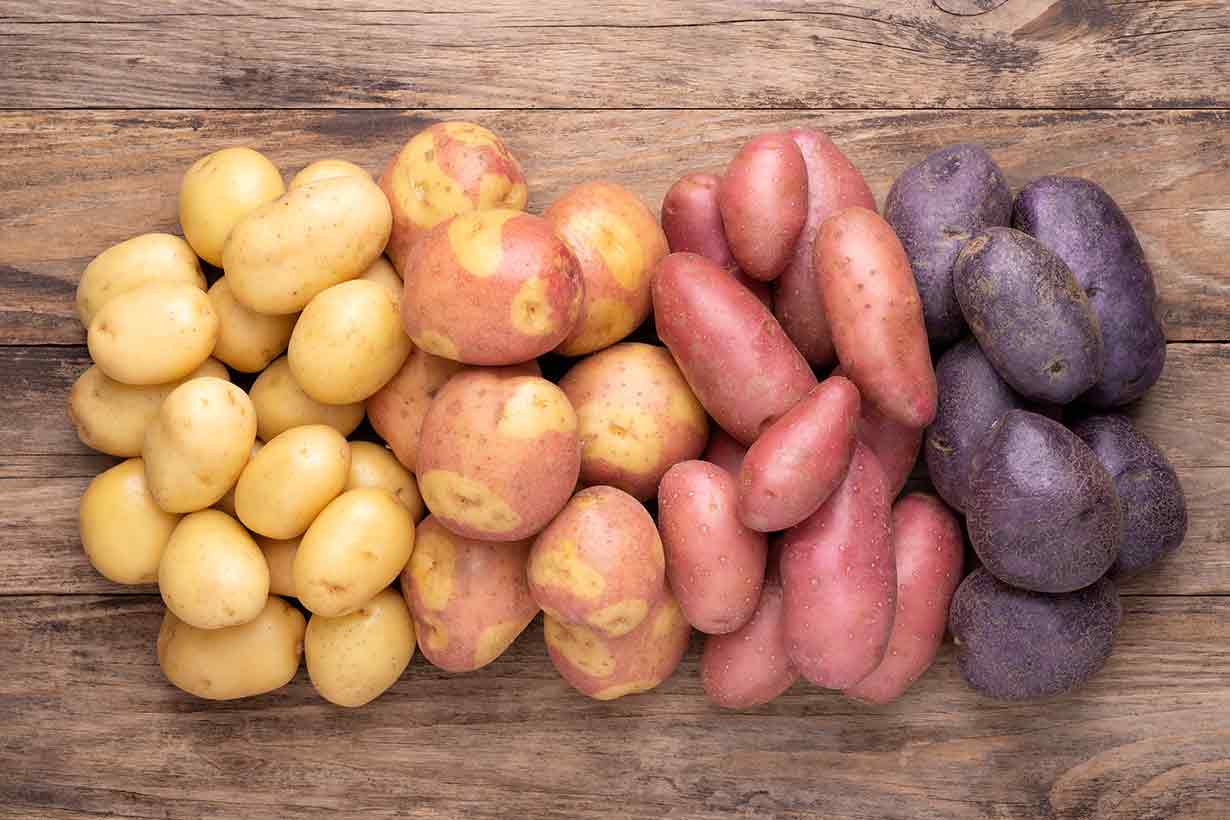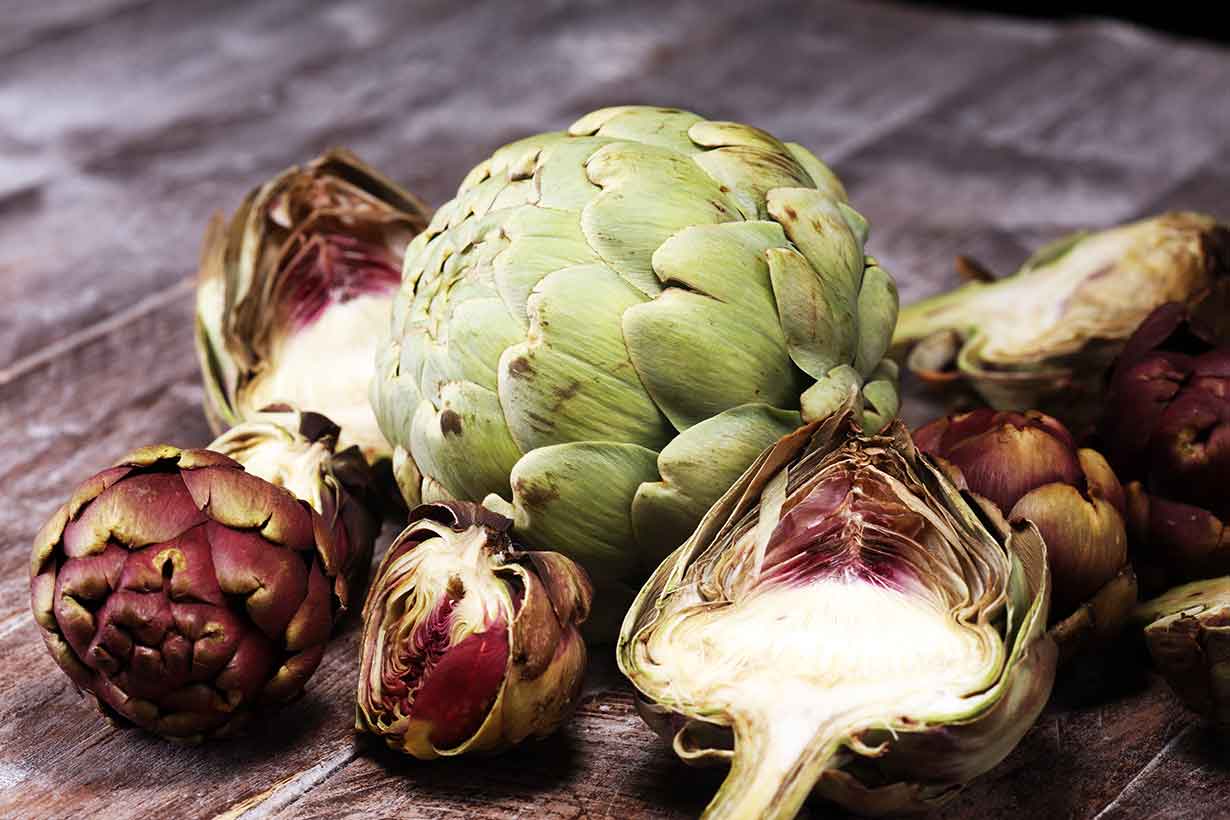Shallots are sometimes called “small onions,” and this accurately describes their appearance.
However, they are quite different from regular onions.
Shallots receive wide acclaim for the deep flavor they can add to any dish, and they are a prized vegetable in cuisines around the world.
In this article, we look at precisely what shallots are, how to use them, and what they offer nutritionally.
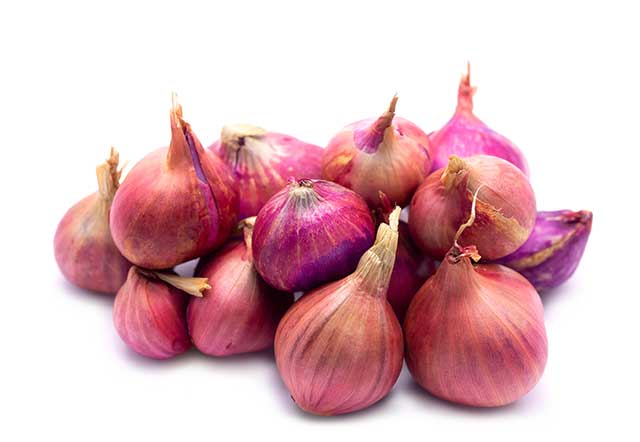
What Are Shallots?
Shallots are part of the Allium genus of plants which includes onions, garlic, chives, and leeks.
In botanical terms, they are a variety of root vegetable.
These small vegetables are a staple in restaurant kitchens around the world for their flavorful taste.
As shown in the above image, shallots share some similarities in appearance with regular onions, but they are much smaller in size.
Shallots are also slightly milder and sweeter than onions, and they have a more delicate—but much deeper—flavor.
There are also notes of garlic in the taste profile, so they make a flavorful addition to just about any dish.
It is thought that shallots originate somewhere in Central or South-East Asia. However, they now grow in numerous countries around the world (1).
Many different cuisines around the world make use of shallots, but they are particularly admired in India and in French cuisine.
Varieties
Like most fruits and vegetables, there are many varieties of shallots that we can buy.
While there are literally dozens of different shallots, some of the most common include;
- Atlas
- Bonilla
- French gray (arguably the most famous type and known as the “true shallot”)
- French red
- Gray shallots
- Prisma
- Red sun
Shallots can range in color and size from green-tinged white colors to light brown and red.
Nutrition Facts
Nutritionally, shallots are primarily a source of carbohydrate, and they offer minimal protein and fat.
In the table below, you can see the full nutritional values for shallots per 100 grams. The data source is the USDA Food Composition Databases (2).
| Calories/Nutrient | Amount | |
|---|---|---|
| Calories | 72 kcal | |
| Carbohydrate | 16.80 g | |
| Fiber | 3.20 g | |
| Sugars | 7.87 g | |
| Fat | 0.10 g | |
| Saturated Fat | 0.02 g | |
| Monounsaturated Fat | 0.01 g | |
| Polyunsaturated fat | 0.04 g | |
| Omega-3 Fatty Acids | <0.01 g | |
| Omega-6 Fatty Acids | 0.04 g | |
| Protein | 2.50 g | |
| Vitamin | Amount | % DV |
| Pyridoxine (B6) | 0.35 mg | 20.5 % |
| Vitamin C | 8.00 mg | 8.9 % |
| Folate | 34.00 mcg | 8.5 % |
| Pantothenic Acid (B5) | 0.29 mg | 5.8 % |
| Thiamin (B1) | 0.06 mg | 5.0 % |
| Choline | 11.30 mg | 2.1 % |
| Riboflavin (B2) | 0.02 mg | 1.5 % |
| Niacin (B3) | 0.20 mg | 1.3 % |
| Vitamin K | 0.80 mcg | 0.7 % |
| Vitamin E | 0.04 mg | 0.3 % |
| Vitamin A | 0.25 mcg RAE | 0.02 % |
| Mineral | Amount | % DV |
| Manganese | 0.29 mg | 12.6 % |
| Calcium | 37.00 mg | 10.0 % |
| Potassium | 334.00 mg | 7.1 % |
| Magnesium | 21.00 mg | 5.0 % |
| Iron | 1.20 mg | 6.7 % |
| Phosphorus | 60.00 mg | 4.8 % |
| Copper | 0.09 mg | 2.8 % |
| Zinc | 0.40 mg | 3.6 % |
| Selenium | 1.20 mcg | 2.2 % |
| Sodium | 12.00 mg | 0.5 % |
As shown in the nutrition profile, shallots are an excellent source of vitamin B6.
Shallots also provide moderate amounts of manganese, calcium, potassium, vitamin C, and folate.
Potential Benefits of Shallots
Other than nutritional benefits from the essential vitamins and minerals they contain, shallots may have some further advantages.
Rich Source of Flavonoids
Shallots contain a significant number of flavonoid compounds, which are a type of polyphenol.
Among these flavonoids, shallots are particularly high in quercetin, and isorhamnetin (3).
Studies looking at shallot flavonoids have demonstrated several benefits in cell (test tube) studies and in animal models. For instance, these benefits include potential anti-inflammatory and immune-enhancing properties (4).
However, these were flavonoid extract studies using rodents and cell lines. In other words; we cannot infer that simply eating shallots would have these same benefits in the human body.
Potential Anticancer Properties
First of all, no single food can “prevent” (or drastically reduce) the risk of cancer, so take this with appropriate context.
However, shallots do contain certain sulfur-containing compounds that research suggests have cancer-preventive properties (5).
These compounds include allicin as well as other thiosulfinate compounds (6).
Furthermore, lab studies using tumor cell lines have demonstrated that shallot extracts can have an inhibitory effect on tumor growth (7).
Once again, this cannot be taken as evidence that consuming shallots has this same effect within the human body.
That said, a wealth of observational and mechanistic research suggests that vegetables in the allium genus, such as shallots, may be beneficial for reducing cancer risk (8, 9, 10, 11, 12).
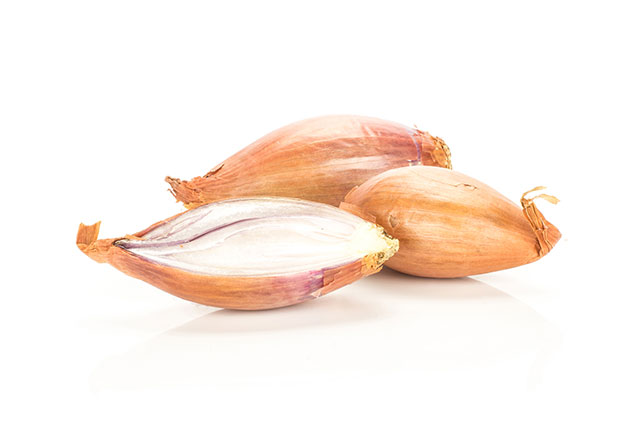
Drawbacks and Side Effects
For the majority of people, shallots are a healthy vegetable with no major drawbacks.
However, they may not be suitable in certain situations.
Allergy
Firstly, shallot allergies are very rare.
However, it is possible to be allergic to some (or all) members of the allium genus (13).
Symptoms of an allergic reaction to shallots may include;
- Breathing difficulties
- Cramps
- Diarrhea
- Dizziness
- Nausea
- Lightheadedness
- Rash
In rare instances, anaphylaxis (severe allergic reaction) can be life-threatening and requires immediate medical attention (14).
Anyone who suspects they may have an allergy to shallots/allium vegetables should consult their doctor.
Not Suitable For Low-FODMAP Diets
Fermentable carbohydrates are sometimes referred to as FODMAPS, which means ‘Fermentable Oligo-, Di-, Mono-saccharides and Polyols’ (15).
However, some individuals have sensitivities/intolerance to FODMAPs.
Low-FODMAP diets are sometimes prescribed for people who suffer from irritable bowel syndrome (IBS) due to their potential ability to improve IBS symptoms (16, 17).
Similar to all members of the allium genus, shallots contain high amounts of fructooligosaccharides. For this reason, they are high in FODMAPS food and are not suitable for low-FODMAP diets (18, 19, 20).
How Do Shallots Differ From Onions?
As previously mentioned, shallots are smaller and have a deeper, more flavorful taste than onions.
However, their nutritional values are also quite different.
The following table compares the basic nutritional values that shallots and onions offer (2, 21);
| Calories/Nutrient | Shallots | Onions |
|---|---|---|
| Calories | 72 kcal | 40 kcal |
| Carbohydrate | 16.80 g | 9.34 g |
| Fiber | 3.20 g | 1.7 g |
| Sugars | 7.87 g | 4.24 g |
| Fat | 0.10 g | 0.10 g |
| Protein | 2.50 g | 1.10 g |
As we can see, shallots are higher in calories than onions. The reason for this is that they contain significantly higher amounts of carbohydrate and sugars. This higher sugar content also explains their sweeter taste.
How To Use Shallots
In addition to tasting great, shallots are a versatile ingredient in the kitchen.
Generally speaking, shallots are used to add flavor and enhance a dish rather than as the main ingredient.
However, there are many different ways to use them, and some of these include;
- Making pickled shallots
- Caramelizing them
- In a flavorful dip
- Stir-frying alongside meat and other vegetables
- Raw as part of a salad
- To flavor a soup or stew
- As part of a vinaigrette
- Baked in an oven-tray alongside roast meat
For some more tasty ideas, there is a list of 31 recipes using shallots here.
Final Thoughts
All in all, shallots are a delicious vegetable that can upgrade the taste of any dish.
While they are mostly known for their flavor-enhancing properties, they do have nutritional benefits too.
These small onions are a good source of several essential vitamins and minerals, and they may offer further benefits due to the various compounds they contain.
For more on root vegetables, see this look at the nutrition benefits of sweet potatoes.

